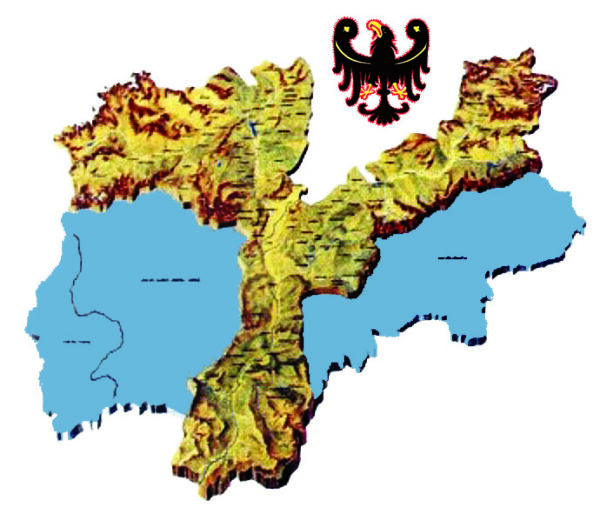December 27, 2021

Spreading agroecological knowledge, know-hows and tools in Trentino is the core our “Environmental Blogging Boost 4 Students” project, jointly carried out with Association Alla Ribalta, A.P.S., and financed by the Adige Water Catchments Consortium (Province of Trento BIM dell’Adige).
Aware of the fact that there is no bullet-proof recipe universally valid for everyone [1], the GreenMarked Team has begun to follow its own path: the creation of a Niche that allows new generations to regain possession of that nearly extinct age-old knowledge – certainly updated with the most modern scientific discoveries.
In this way, a strong strategic combination is applied: the prevention of knowledge disappearance and the prevention of natural capital extinction. In other words, the adopted path promotes ecological culture – in its theoretical principles and practical applications – to strengthen and prosper the territory.
A type of land development that includes not only ecological but also business dynamics, in which the wealth of the Province of Trento and of future generations is generated.
The project implementation approach shows the crucial underlaying perspective on both ecology and business. With a detailed stakeholder analysis [2], the Team photographed, analyzed and assessed the impact of all the Institutions and Associations directly and indirectly involved with agroecology in Trentino (both for and against).
The goal is therefore to disseminate agroecological knowledge and know-hows to the people of Trentino – especially to those involved in the key bodies found in the stakeholder analysis – to stop the loss of and recover this local cultural capital and past achievements. Agroecology can become a strategic solution to tackle the forthcoming environmental breakdowns – which are already affecting several agricultural areas around the world – and the loss of effectiveness of current farming methods, which have not yet been updated with the most modern scientific breakthroughs.
To achieve such goal, a brief roadmap (i.e., a concrete proposal for planning and carrying out the work in steps) will now be illustrated. Recalling the simplicity and richness of wheat spikes, we will name it the “Five Golden Threads” roadmap: five simple steps to help the land prosper again.
In short: Seeding, Sprouting, Growth, Networking, and Germination.
Seeding is the research and planning phase, including costs & benefits analyses, the required human and technological resources assessments, energy needs evaluations and business risk tolerance assessments. How far can we go? What are the best business pathways and who are our strategic business partners? If the project is not as successful as expected, can we still sustain it? But for how long?
The stakeholder analysis and the collaboration started with two schools of Trentino and the Free University of Bolzano-Bozen show how much the GreenMarked Team has already worked hard on this first phase, field-testing its ideas, its risk tolerance and amount of devoted workhours. It also showed its ability to count on a valid and trusted network of collaborators to carry out diversified tasks and initiatives: from stakeholder analyses to articles co-editing with students.
The first phase merged and developed simultaneously with the second. As a matter of fact, the five phases must not be seen as separate and independent compartments, but rather intersecting development streams. Flexibility is indeed an important element in an ever-changing reality such as the current one. It is necessary, if not mandatory, to go back over the planning, enriching the initial project plan with new elements. It happened after the pandemic when educational classes in presence were replaced by online webinars.
It is then easy to understand that the Sprouting symbolizes the ideas and the collected data testing phase. The first test addresses a selected audience – specifically, the project-collaborating schools – and focuses on the effectiveness of the choices made.
The Sprouting thread is then followed by Growth, also referred as design development. It is the most important phase in the project execution and it is the one that the Team is currently tackling. All the monitoring data and feedback received must now be integrated in the project plan revision, correcting specific needs where they have strongly emerged. In this phase, existing relationships must be taken care of, and new connections with contacts of different hierarchical work position must be opened: project leaders, project managers, executers (whether employees, volunteers or teachers) and also the project target group (associates, students, etc.). The user base must be broadened. One cannot identify and target one contact only for each key stakeholder but must strive to target all the contacts linked to that stakeholder. They can be a source of and a mean for new opportunities. Potentially, every linked contact can be and may want to be involved in the project, play a key role for its spread, and even integrate it in his daily life and future.
A careful verbal exchange is not the only approach to achieve all this. Through constant presence – with regular initiatives and events that directly involve stakeholders – one must build a relationship of trust and become a meaningful point of reference. By developing regular activities with both governmental bodies and non-governmental organizations and presenting meaningful outcomes, one can truly become a key player in the field addressed by the project goal.
In this process, youth is a strategic factor. Young people involved in the project must feel the desire of sharing it with their friends and join the projects events as joyfully as when they go to sports training or they practice their favorite games and hobbies. The young age of the GreenMarked Team members is a great advantage. Young members can be direct points of contact for young project target groups without the need of middlemen. Young members could be allowed to review the project plan and contaminate it with new ideas for agroecological development that are aligned with new generations’ mentality. This is a stress test sub-phase that can be used to validate the project, and lead to the development of new pathways, ideas to be tested and applied by the young ones.
To spread (agro) ecology, it is not enough to diversify communication means and blog media [3]. The Team must look for ways to truly transform both the real and digital world. Through the results of its actions, the Team can try to attract the press instead of (only) looking for it. This is valid also with credit institutions. Especially thanks to an increased media coverage, the Team can attract new funds. Growth requires this change of perspective, which can be achieved only with the utmost and unconditional confidence in the project.
From this consideration, the fourth Golden Thread arises spontaneously and parallel to the third one: Networking. In fact, I renamed it Networkoria, putting together the English word, “network”, and the ancient Greek word Koreo (i.e., “to bring”). Networkoria is inspired by the botanical world and refers to the spread of the seed, or how plants propagate to make their species thrive. The proliferation of the Team’s agroecological ideas and the consequent wealth gained by the territory is carried neither by the wind nor by the water or the animals. It is carried by the “network effect”: mankind’s greatest way of exponential proliferation of ideas. The more people talk about the project and build up on it, the more the project can spread out exponentially. The cascade effects is a multiplication not a simple sum. All actors involved in the project should therefore be invited not only to join and share the project activities, but also to develop their own initiatives based on the project, involving friends and relatives. This will allow to enter people’s homes and families, widening the project audience and making it unselected. The transition will require a careful monitoring of the impact, and eventually to go back and redefine the three previous Golden Threads – once again, all simultaneously. The consumed energy, the costs and benefits, and the business risks will finally become of a much higher order of magnitude.
At that point it will be possible to think of financial revenues for the most efficient initiatives. They will support the growing organization structure and actions of a much greater impact on the territory.
Once the overall structure is reassessed and recalibrated, we will inevitably arrive at the final launch of the project. This time, a project that is open to the public, and ready to sustain the impact of a nationwide user base. This is the last Golden Thread, the Germination: the actualization of a dynamic, open, flexible and effective project model, that can be exported to any kind of environment.
Bibliography:
[1] Tosoni, J. (2018, December 22). Environmental NGOs’ dilemma. GreenMarked. https://greenmarked.it/ngodilemma
[2] Miller, M.L. (2021, October 29). A stakeholder analysis to spread agroecology in Trentino. GreenMarked. https://greenmarked.it/trentino-agroecology-stakeholder-analysis/
[3] GreenMarked Team (2021, November). Eco-battles picture stories. GreenMarked. https://greenmarked.it/eco-battles-picture-stories/
Cover and preview image: wheat spikes. Free-source photo.
This report is part of the project “Environmental Blogging Boost 4 Students“, aimed at increasing the spread of agroecology and sustainable water management in Trentino. The project is financed by the BIM Adige Water Catchments Consortium (grant approved by provision n. 100 of June 06, 2021).




